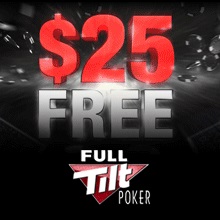The situation dictates how they are played
Volume II of the Winning Poker Tournaments One Hand at a Time series by Eric “Rizen” Lynch, Jon “PearlJammer” Turner, and Jon “Apestyles” Van Fleet was recently released. In this book, each author chose one tournament, and discussed the key hands from once he made the money all the way down to heads-up play. For this column, I decided to choose some hands from Lynch’s analysis that look at different situations for playing small or medium pocket pairs.
Note that all of the hands are roughly the same, small or medium pocket pairs, but the situation changes the action significantly. In one hand, Rizen folds 7-7, and in the next, he discusses the possibility of four-betting with 6-6!
The abbreviations stand for the following:
MP – middle position
CO – cutoff
BTN – button
SB – small blind
BB – big blind
UTG – under the gun
Hand 8
Seat 2 MP1 (Rizen): 25,023
Seat 3 MP2: 22,165
Seat 4 CO: 41,009
Seat 5 BTN: 67,804
Seat 6 SB: 22,732
Seat 7 BB: 16,129
Seat 8 UTG: 67,062
Seat 9 UTG+1: 24,266
Seat 1 UTG+2: 60,365
800-1,600 Blinds, 200 Ante
Setup: We are now down to three tables, and this is the second hand at my new table. The only player with whom I am familiar is Seat 5, a well-known European who has a very aggressive style. This table has significantly more short stacks than my previous one, with Seats 3, 6, 7, and 9 all being very short. I’ll be watching the table to see how they react. They all have at least 10 big blinds. With stacks of this size, many players will start open-pushing a greater range of hands. The table may consolidate fairly quickly, or it may present opportunities to steal if they all play too close to the vest.
Preflop (4,200 pot) 3 3
3





Since it’s my second hand here, however, I should get a lot of credit from the table. Annette Obrestad, 2008 World Series of Poker Europe winner, once told me that your first push (referring to both open-pushes and resteals) should be with garbage, as your opponents will usually give you too much credit, and subsequent pushes should be more selective, as opponents begin to doubt you more and more with each push. I agree with her — although it’s no fun when your first push runs into aces! In this case, though, Seat 9 raises to 4,800, and with very little resteal fold equity, I am forced to fold. The button is the only caller, and they take a flop.
Flop (13,800 pot) 7




































Hand 27
Seat 1 MP2: 58,168
Seat 2 CO: 182,580
Seat 3 BTN: 63,347
Seat 4 SB: 199,460
Seat 5 BB: 98,643
Seat 6 UTG: 116,576
Seat 7 UTG+1: 226,699
Seat 8 UTG+2 (Rizen): 154,730
Seat 9 MP1: 120,797
3,000-6,000 Blinds, 750 Ante
Setup: I have a stack of 25 big blinds. Seats 1 and 3 are getting dangerously short, and I expect Seat 5 to start exercising his all-in game very, very soon.
Preflop (15,750 pot) 7










Given the aggressive nature of some of the players yet to act behind me, this is an important consideration. In addition, there are some short stacks behind me whom I’d have to call due to pot odds if they three-bet all in and Seat 6 folded. I’d rather not be put in that situation. I fold, and the action is folded around to the small blind, who cold-calls 15,000 more. The big blind folds, and two players see the flop.
Hand 38
Seat 3 SB: 159,530
Seat 4 BB: 537,442
Seat 7 UTG: 81,676
Seat 8 BTN (Rizen): 442,352
6,000-12,000 Blinds, 1,500 Ante
Setup: Seat 4 and I are taking turns stealing from the shorter stacks. With the recent blinds increase, the short stacks are going to get desperate fairly soon, so I expect the chips to start flying around a bit more.
Preflop (24,000 pot) 6

















































It is worth noting that even though I feel this call is obvious with pocket sixes, if I call and lose, it will drastically alter the table and stack dynamics, and put me in a position where I have to play far more defensively. On the other hand, if I win, it becomes a three-handed contest, with me being the chip leader.
Submit your review | |











